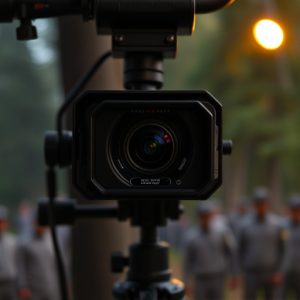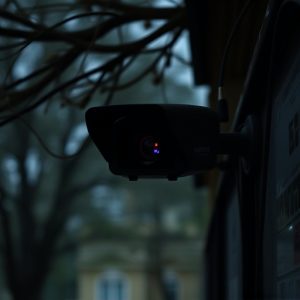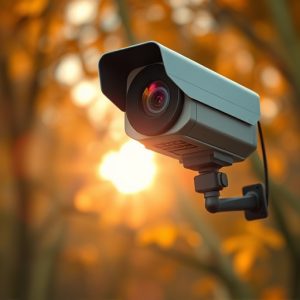Microphone Bug Sweeping: Techniques, Battery Cameras, and Home Safety Tips
Battery life is a critical factor in spy camera comparison, impacting surveillance duration and reli…….
Battery life is a critical factor in spy camera comparison, impacting surveillance duration and reliability. Modern spy cameras with advanced features offer longer battery lives, enhancing security through discreet monitoring. Consumers should weigh energy-efficient models against desired functionalities like Wi-Fi connectivity and HD video recording. Strategic placement and ethical considerations ensure balanced use of these devices for enhanced home security while preserving privacy.
In today’s digital age, privacy concerns have escalated with the rise of sophisticated microphone bug sweeping. Understanding this clandestine practice is crucial for homeowners aiming to safeguard their homes. This article delves into the basics of microphone bug sweeping, offering an overview of common detection techniques accessible at home. We explore the surprising connection between battery life and spy cameras in these devices, providing a comparative analysis of best practices for bug sweepers. Additionally, we equip homeowners with valuable tips to enhance safety and privacy.
- Understanding Microphone Bug Sweeping: Unveiling the Basics
- Common Detection Techniques at Home: An Overview
- Battery Life and Spy Cameras: The Unlikely Connection
- Comparative Analysis: Best Practices for Bug Sweepers
- Enhancing Safety and Privacy: Tips for Homeowners
Understanding Microphone Bug Sweeping: Unveiling the Basics
Microphone bug sweeping, also known as audio surveillance, is a clandestine method of listening in on conversations using hidden microphones or spy cameras. It involves sophisticated techniques to detect and locate these covert devices, which can be embedded in everyday objects like pens, clocks, or even wall art. The primary goal is to ensure privacy and security by identifying potential bugs before sensitive discussions take place.
In today’s digital age, where battery life plays a crucial role in portable electronics, bug sweepers employ advanced equipment that seamlessly integrates this functionality. Spy cameras, for instance, are designed with low power consumption features, making them harder to detect. When compared to traditional battery-draining devices, these modern spy gadgets offer longer surveillance times without compromising on performance. This advancement enables thorough inspections, ensuring no hidden microphones go unnoticed.
Common Detection Techniques at Home: An Overview
At-home bug sweeping for microphones has become a growing concern, with an array of detection techniques available to consumers. One of the most common methods involves using specialized devices that can pick up electromagnetic signals emitted by hidden cameras and bugs. These detectors often include features like RF (radio frequency) scanning, which helps identify potential spy cameras equipped with wireless microphones. Many modern options also incorporate GPS tracking, allowing users to pinpoint the exact location of the device emitting the signal.
Additionally, visual inspections using high-resolution cameras have gained popularity. This technique is especially useful for identifying tiny hidden cameras in spaces like ceiling lights or wall sockets. In terms of comparison, battery life plays a significant role in choosing a bug sweeping tool. Devices with longer battery life offer more flexibility and time for thorough searches, while those with shorter battery lives may require frequent recharging during extensive sweeps.
Battery Life and Spy Cameras: The Unlikely Connection
In the realm of hidden devices, battery life and spy cameras often go hand in hand—literally. While at first glance these two seemingly unrelated aspects may not evoke a connection, understanding their interplay is crucial for anyone concerned about privacy and security. Spy cameras, designed to operate discreetly and over extended periods, rely heavily on efficient power sources like long-lasting batteries. This need for longevity has driven innovation in both battery technology and camera design, resulting in compact yet powerful devices capable of capturing high-quality footage for days or even weeks without intervention.
When comparing battery life across spy cameras, several factors come into play. The type of battery (rechargeable vs disposable), its capacity, and the energy consumption of the camera itself all contribute to the overall operational duration. Advanced features like motion detection, infrared capabilities, and HD recording can significantly impact battery drain, underscoring the importance of understanding these devices’ power requirements. By carefully considering battery life as a key performance indicator, users can make informed decisions when selecting spy cameras, ensuring they meet their specific needs for continuous monitoring while minimizing the frequency of replacement or recharging.
Comparative Analysis: Best Practices for Bug Sweepers
In the realm of bug sweeping, particularly for home security, a Comparative Analysis is essential to discern the best practices among various techniques. One crucial aspect often overlooked is the device’s Battery Life and its potential impact on operation duration and reliability. Among popular options, Spy Cameras stand out for their advanced capabilities but must be evaluated against their power consumption. A thorough comparison reveals that models with efficient power management can offer extended periods of surveillance without frequent recharging, enhancing operational flexibility.
Additionally, the presence of features like Wi-Fi connectivity and HD video recording further complicates the choice. Bug sweepers should consider a balance between these functionalities and battery longevity to ensure consistent performance during sweeps. Some devices excel in specific areas, while others offer well-rounded solutions, making it imperative for professionals to match their needs with the right equipment.
Enhancing Safety and Privacy: Tips for Homeowners
When it comes to enhancing safety and privacy at home, modern technology offers a range of innovative solutions, including hidden spy cameras. These devices, often powered by long-lasting batteries, provide homeowners with a sense of security. By strategically placing them in areas like entryways, basements, or even within everyday objects, you can monitor activity without being obvious. When comparing different spy cameras, consider their battery life—a key factor for continuous surveillance.
Privacy and safety aren’t just about equipment; it’s also about smart placement and ethical use. Ensure that your setup respects the privacy of visitors and family members. Regularly review recorded footage and maintain clear lines of communication regarding the presence of these devices. This balance between technology and awareness can greatly contribute to a secure home environment, while also considering the implications for personal spaces.
In the realm of home security, understanding microphone bug sweeping and employing effective detection techniques are essential steps towards safeguarding privacy. This article has provided an overview of common methods, highlighted the connection between battery life and spy cameras, and offered a comparative analysis to aid bug sweepers. For homeowners, enhancing safety involves staying informed about best practices and implementing tips to deter unwanted intrusions, ensuring peace of mind in their living spaces. Remember, staying proactive is key to maintaining a secure environment.


